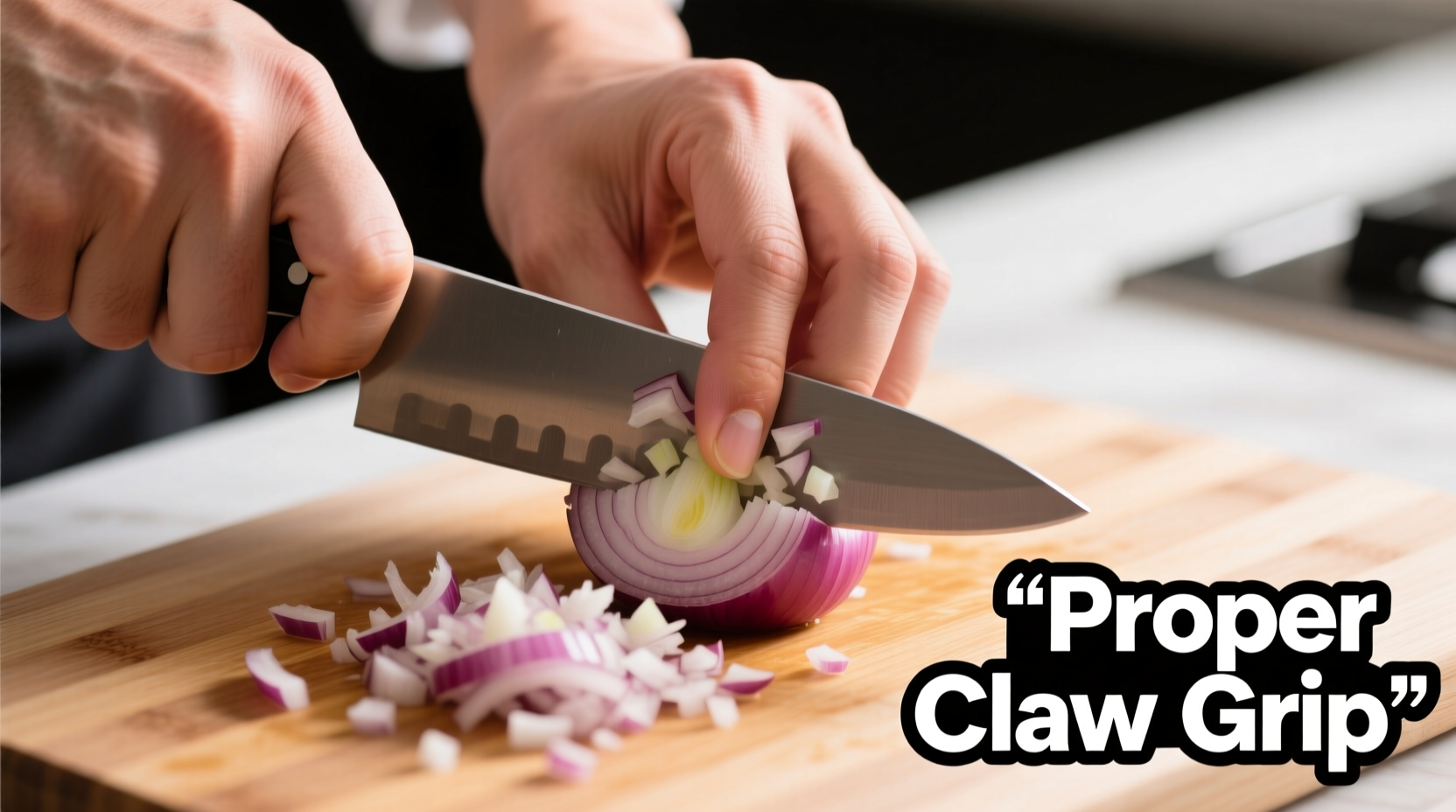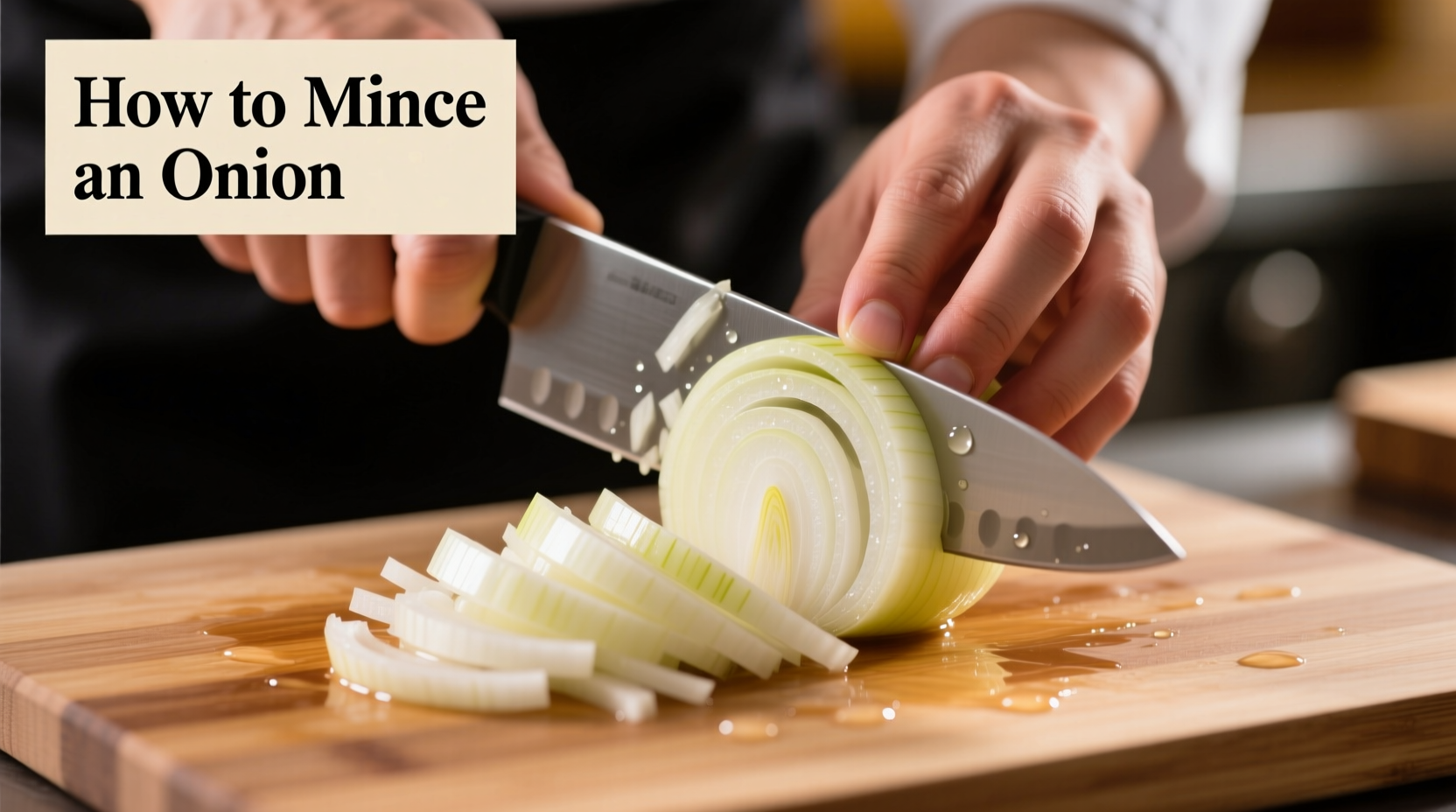Mastering onion mincing transforms your cooking from amateur to professional. Whether you're preparing sofrito, making salsa, or building flavor foundations for soups and stews, properly minced onions distribute flavor evenly and cook uniformly. Most home cooks struggle with inconsistent cuts and excessive tearing—but with the right technique, you'll achieve restaurant-quality results every time.
Essential Tools for Perfect Onion Mincing
Your equipment makes or breaks the mincing process. Professional chefs rely on three non-negotiable items:
- 8-10 inch chef's knife with a curved blade for rocking motion (Wüsthof and Victorinox are industry standards)
- Stable cutting board (1.5-inch thick wood or composite material prevents slipping)
- Sharpener (dull knives crush cells, releasing more tear-inducing compounds)
While food processors offer speed, they often create uneven, mushy results by over-processing. As the Culinary Institute of America's knife skills curriculum emphasizes, manual mincing provides superior texture control for most applications.
Step-by-Step Mincing Technique
- Prep the onion: Cut off stem end, slice in half vertically through root, peel layers. Keep root intact—it holds layers together during cutting.
- Vertical cuts: Place cut-side down. Make thin slices parallel to root (¼ inch apart), stopping ½ inch from root end.
- Horizontal cuts: Angle knife toward root, make 1-2 shallow cuts through vertical slices.
- Final mince: Rock knife through onion from tip to root, using claw grip with non-knife hand.
- Refine: Gather pieces and repeat rocking motion for finer mince if needed.

Why Onions Make You Cry (And How to Stop It)
When you cut onions, you rupture cells containing alliinase enzymes and sulfenic acid. These combine to form syn-propanethial-S-oxide—a volatile gas that reacts with eye moisture to create sulfuric acid. The American Chemical Society confirms this chemical reaction is unavoidable, but you can minimize exposure:
- Cut near running water or under a vent to disperse gases
- Chill onions 30 minutes before cutting (slows enzyme reaction)
- Use extremely sharp knives (causes less cell damage)
- Avoid cutting the root end until final steps (highest enzyme concentration)
| Cutting Technique | Particle Size | Best For | Prep Time |
|---|---|---|---|
| Mincing | 1/8 inch | Sauces, dressings, fine salsas | 2-3 minutes |
| Dicing | 1/4-1/2 inch | Stews, stir-fries, salads | 1-2 minutes |
| Julienne | Matchstick (2x1/8 inch) | Garnishes, fajitas | 3-4 minutes |
When to Choose Mincing Over Other Cuts
Mincing serves specific culinary purposes that coarser cuts can't replicate. According to FDA Food Code guidelines, finely minced onions incorporate more evenly into raw applications like salsas and ceviche, reducing food safety risks from uneven marination. In cooked dishes, mincing creates maximum surface area for:
- Flavor extraction in stocks and sauces
- Rapid caramelization for mirepoix
- Uniform texture in meatloaf and burgers
For dishes requiring distinct onion pieces (like onion rings or grilled vegetable skewers), choose larger cuts instead. The texture difference significantly impacts mouthfeel—minced onions virtually disappear into sauces while diced onions provide noticeable texture.
Troubleshooting Common Mincing Mistakes
Even experienced cooks encounter these issues. Here's how to fix them:
- Inconsistent pieces: You're not making uniform vertical cuts. Use guide fingers spaced evenly across onion.
- Onion slipping: Your board isn't stable. Dampen towel underneath or use board with rubber feet.
- Excessive tearing: Knife is dull or you're cutting root end too early. Follow the 5-step technique precisely.
- Mushy results: Over-processing. Stop when pieces reach rice-grain size (1/8 inch).
Storage and Usage Tips
Properly stored minced onion maintains quality for specific timeframes:
- Room temperature: Use within 2 hours (food safety risk)
- Refrigerated (airtight container): 3-4 days
- Frozen (oil-coated): 6 months
For best results, add minced onions to dishes during the flavor-building phase—typically after heating oil but before main ingredients. This allows sulfur compounds to mellow while maximizing flavor infusion. Never add raw minced onion to finished dishes unless specifically called for in recipes like pico de gallo.











 浙公网安备
33010002000092号
浙公网安备
33010002000092号 浙B2-20120091-4
浙B2-20120091-4